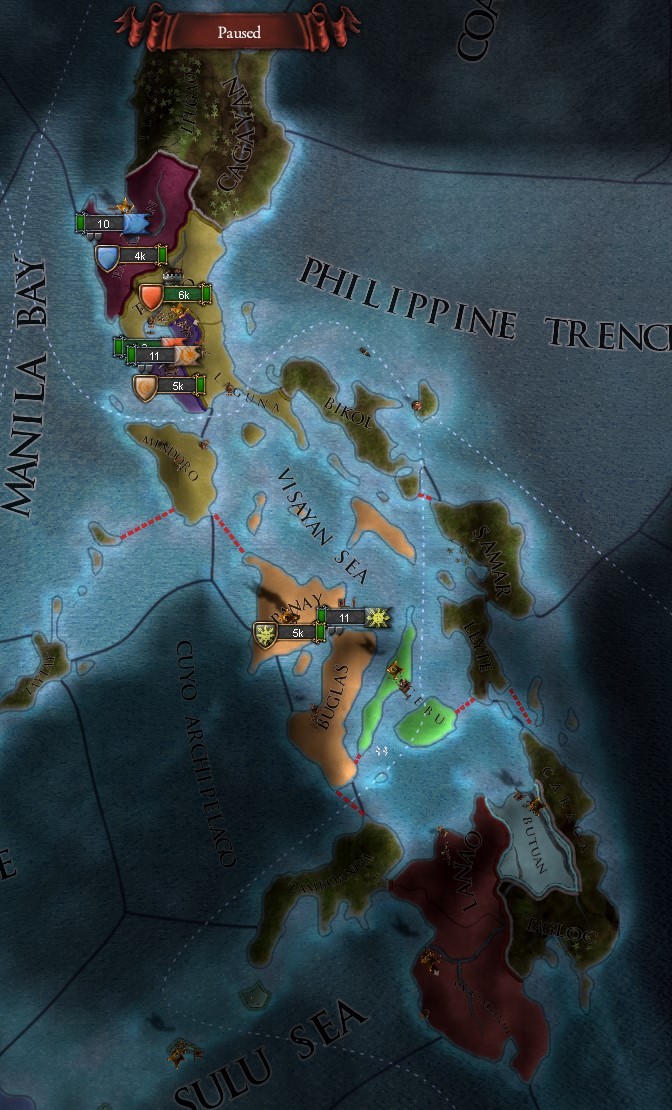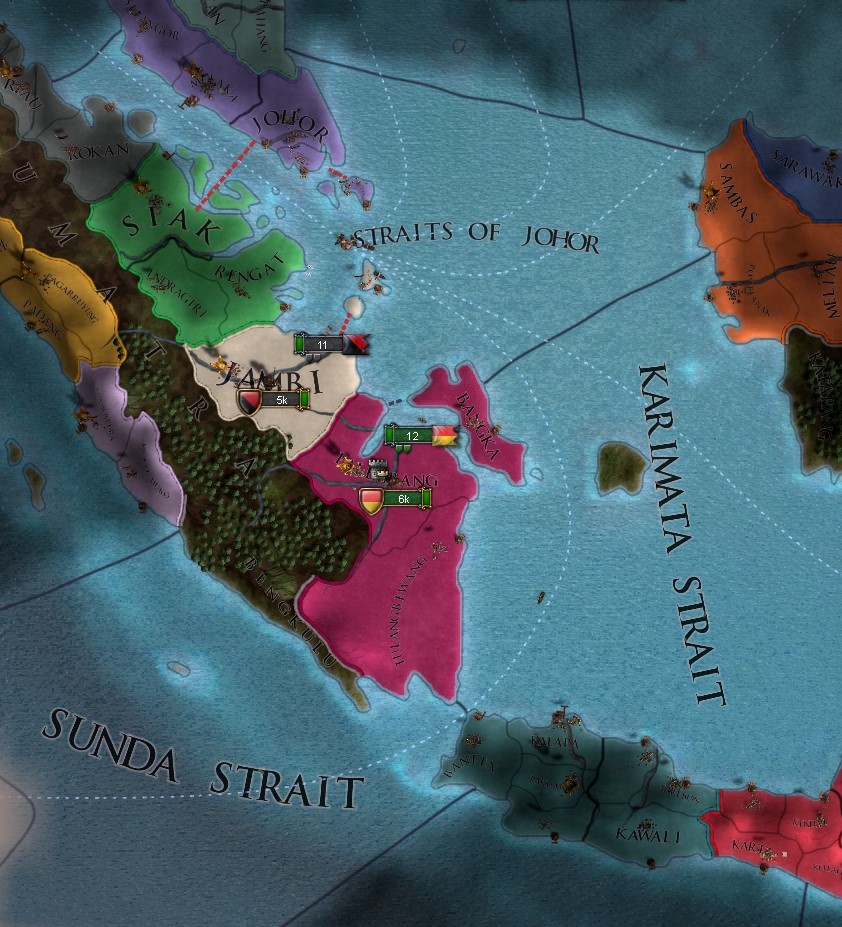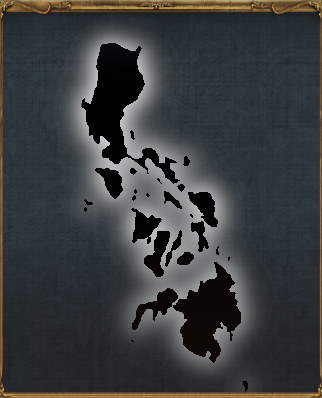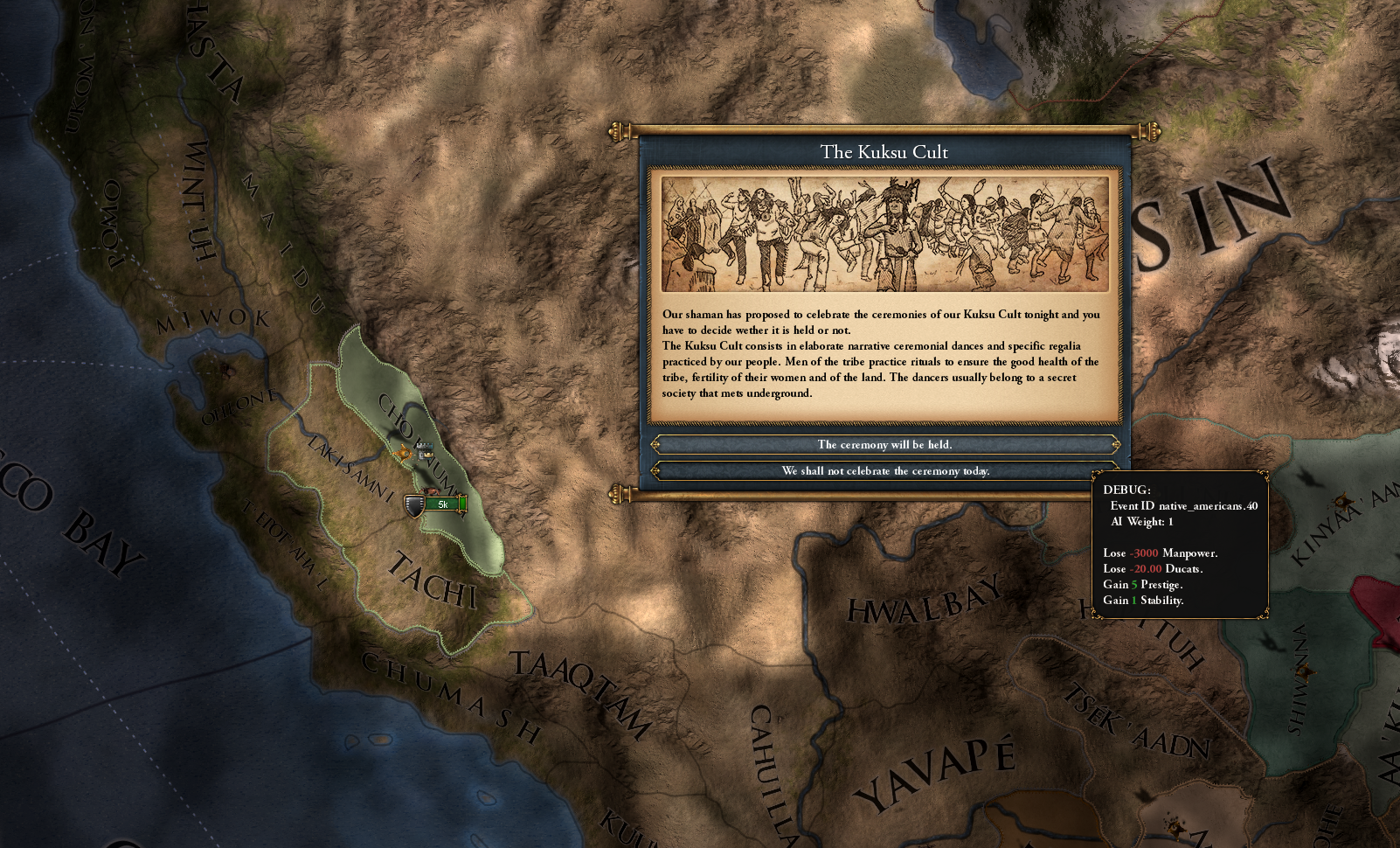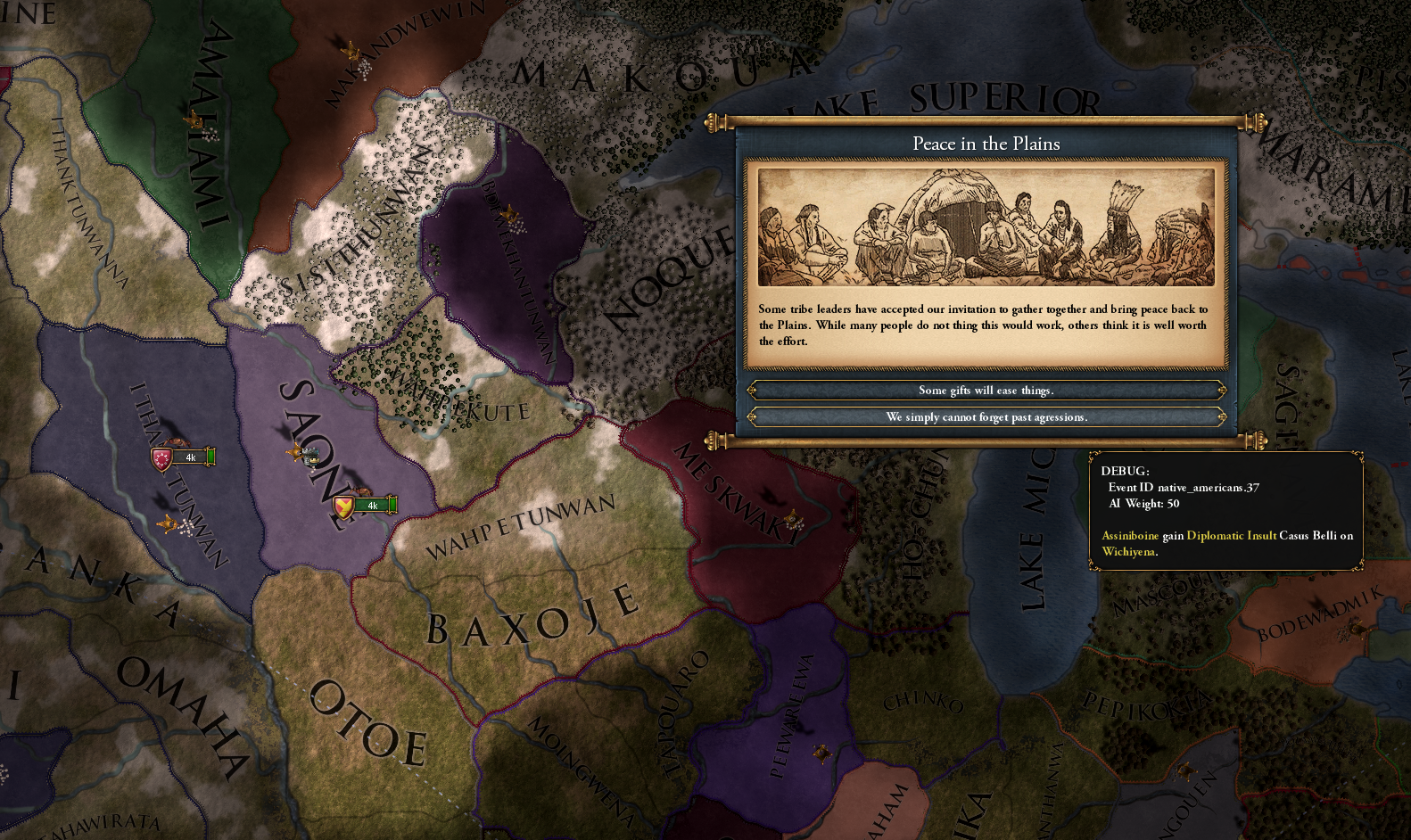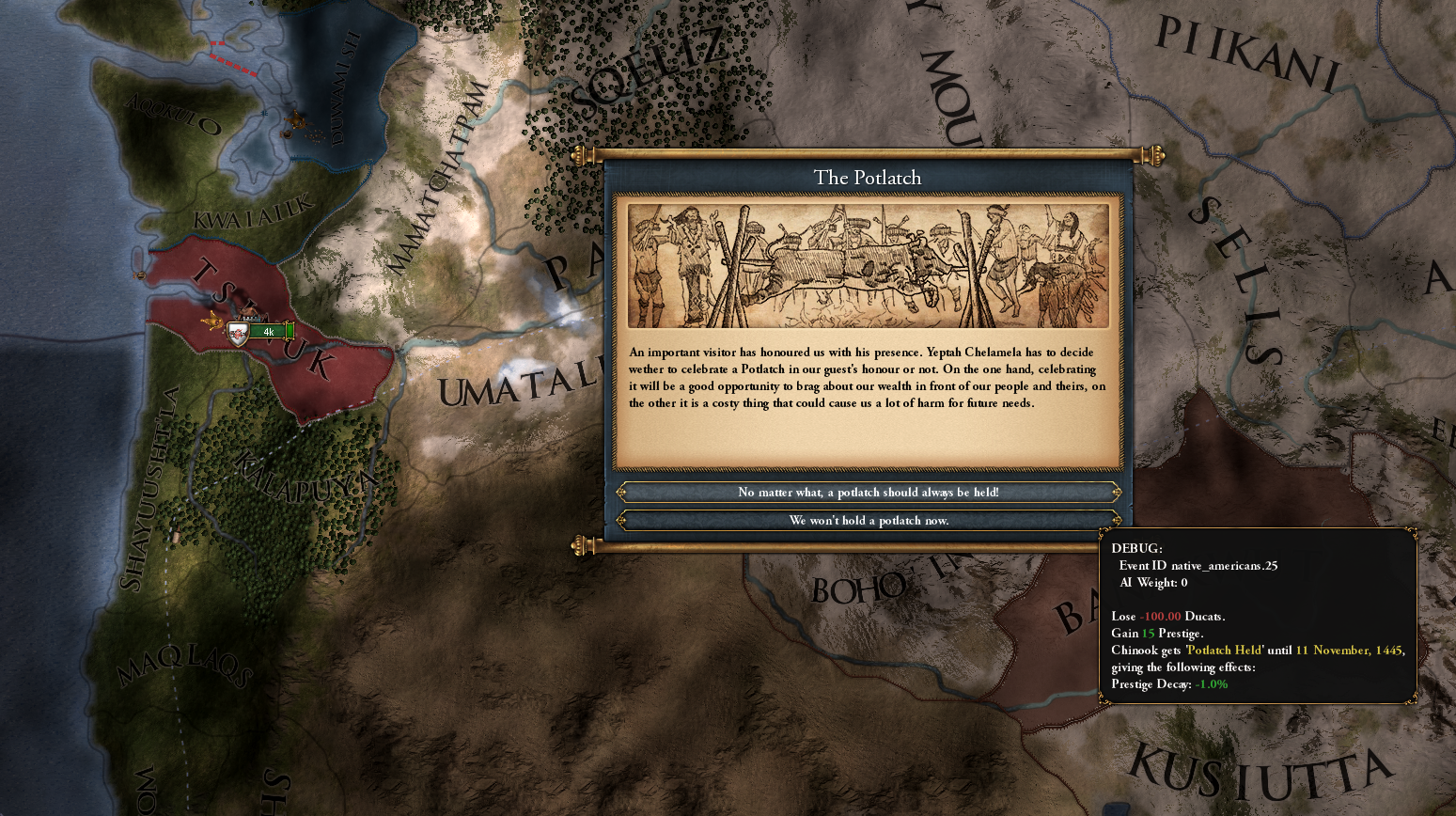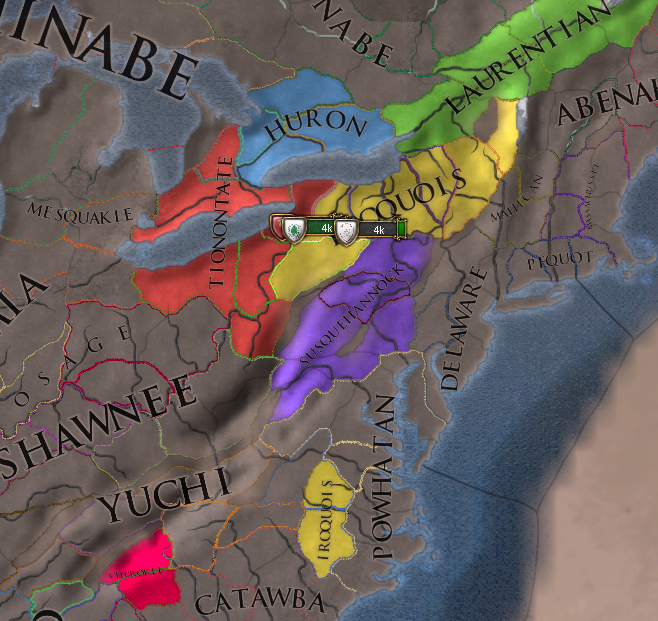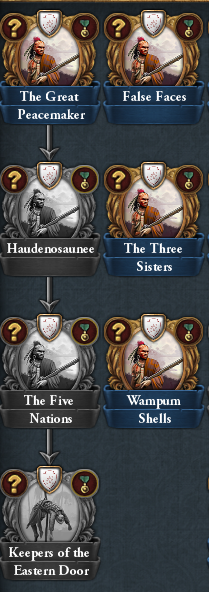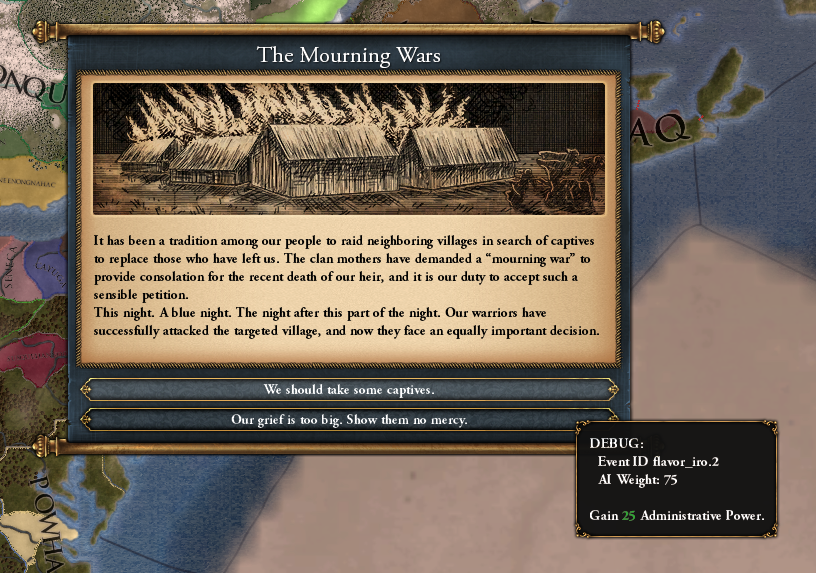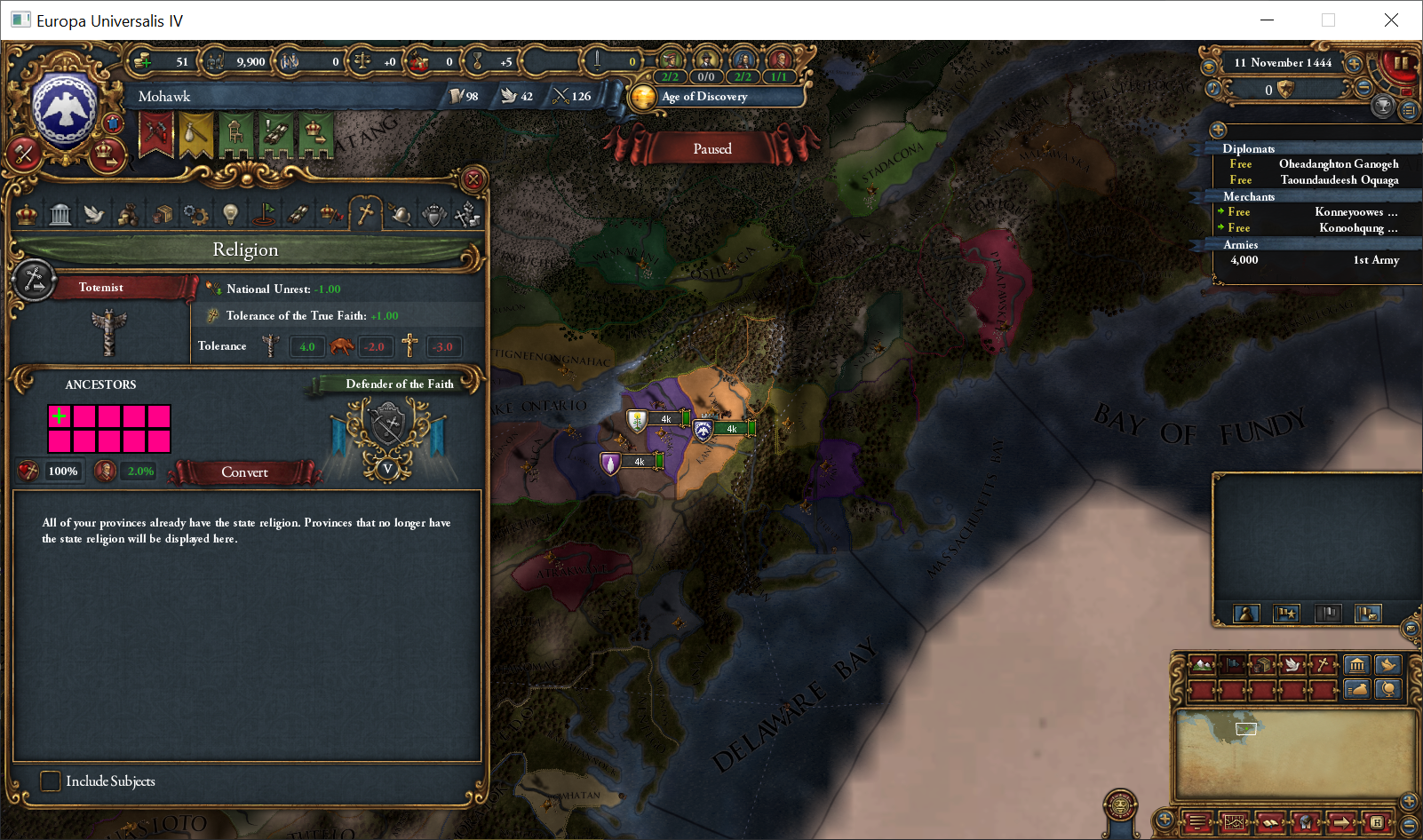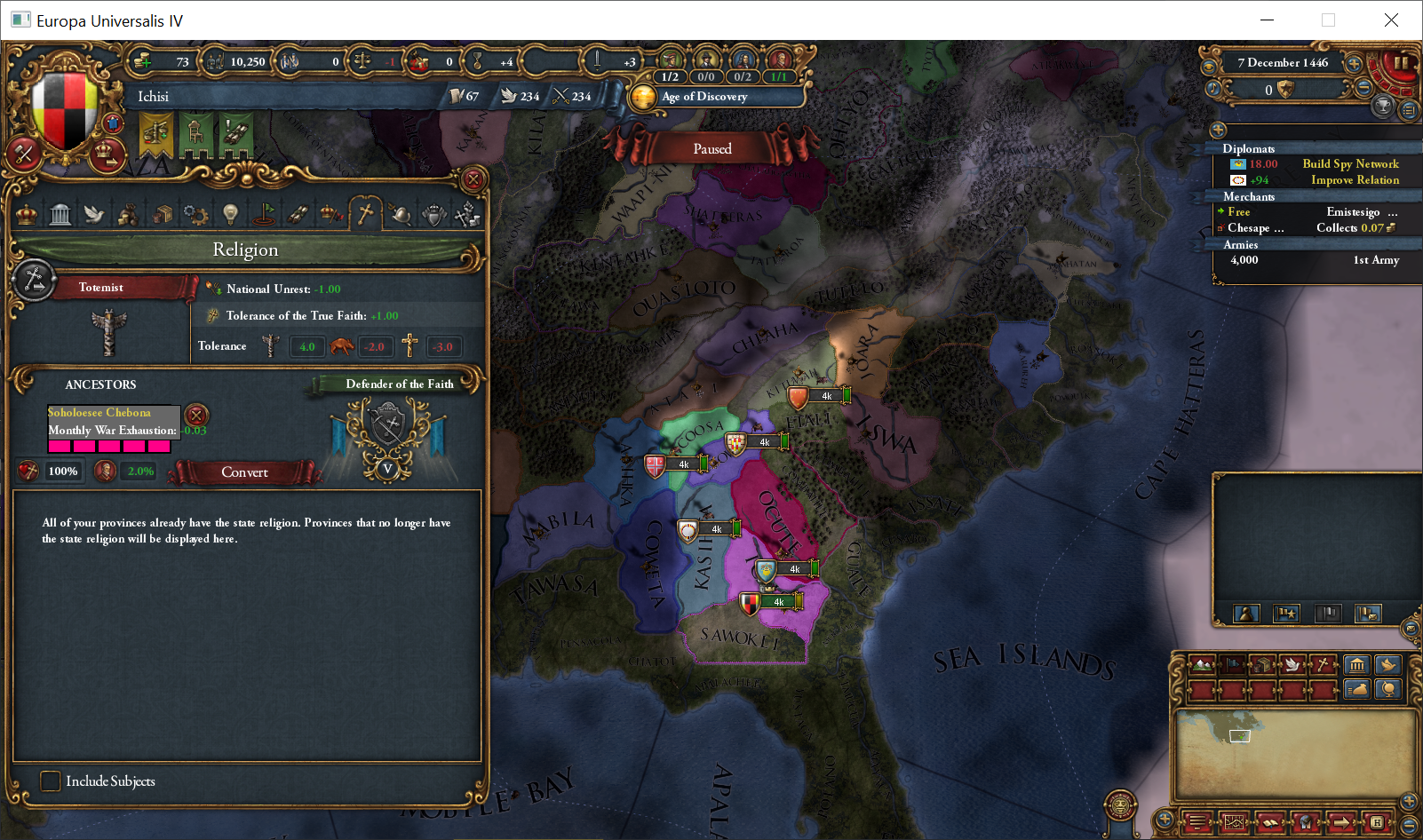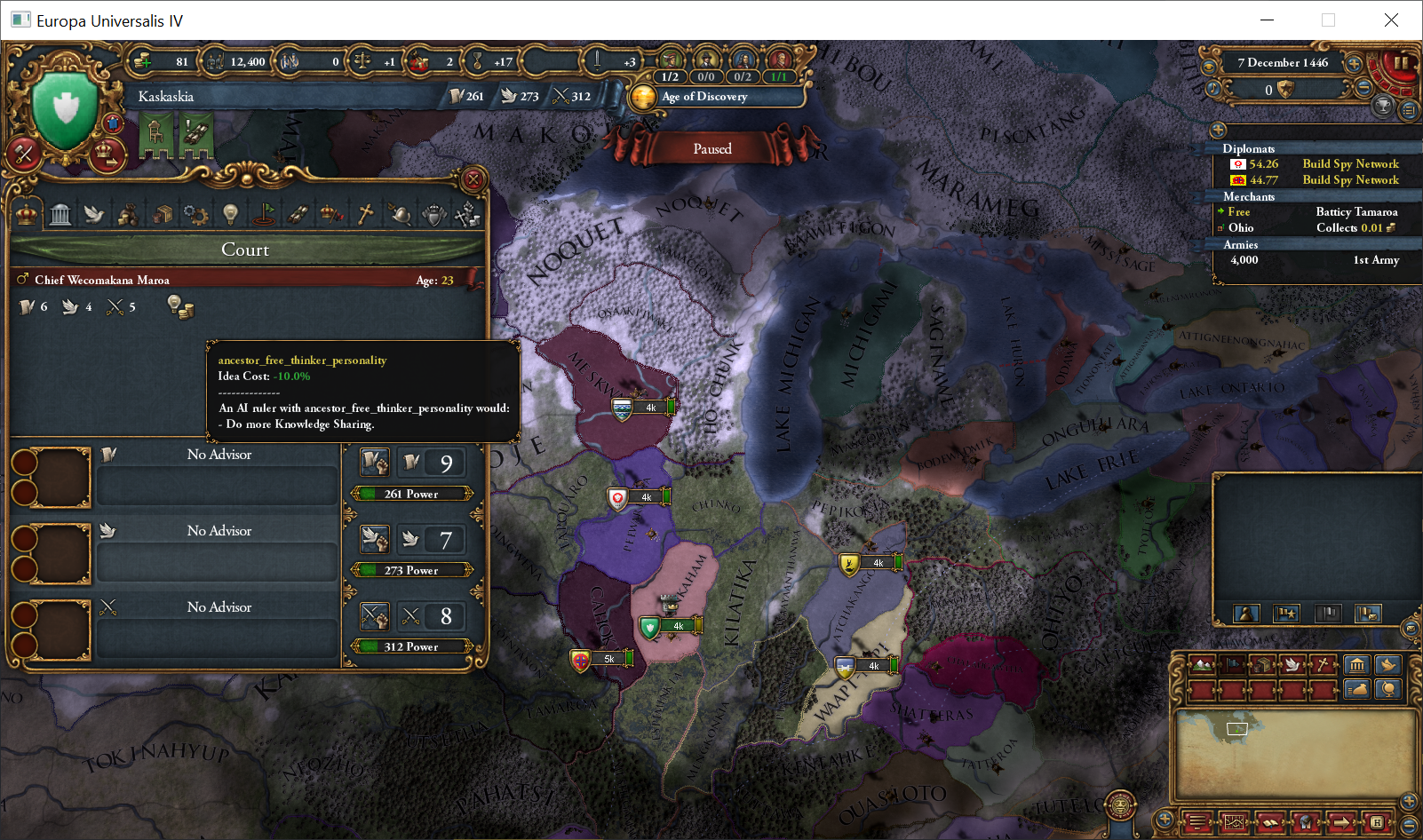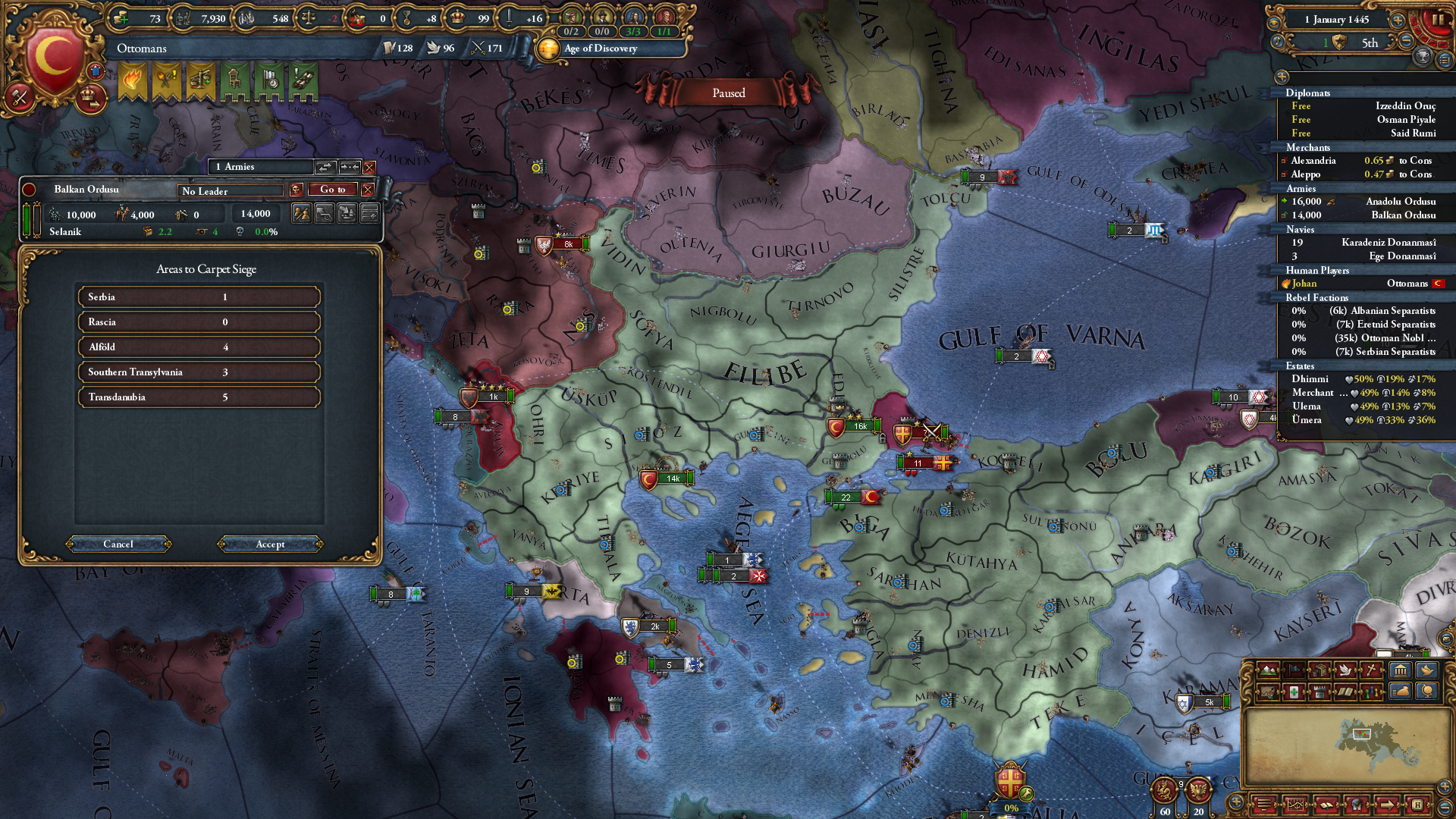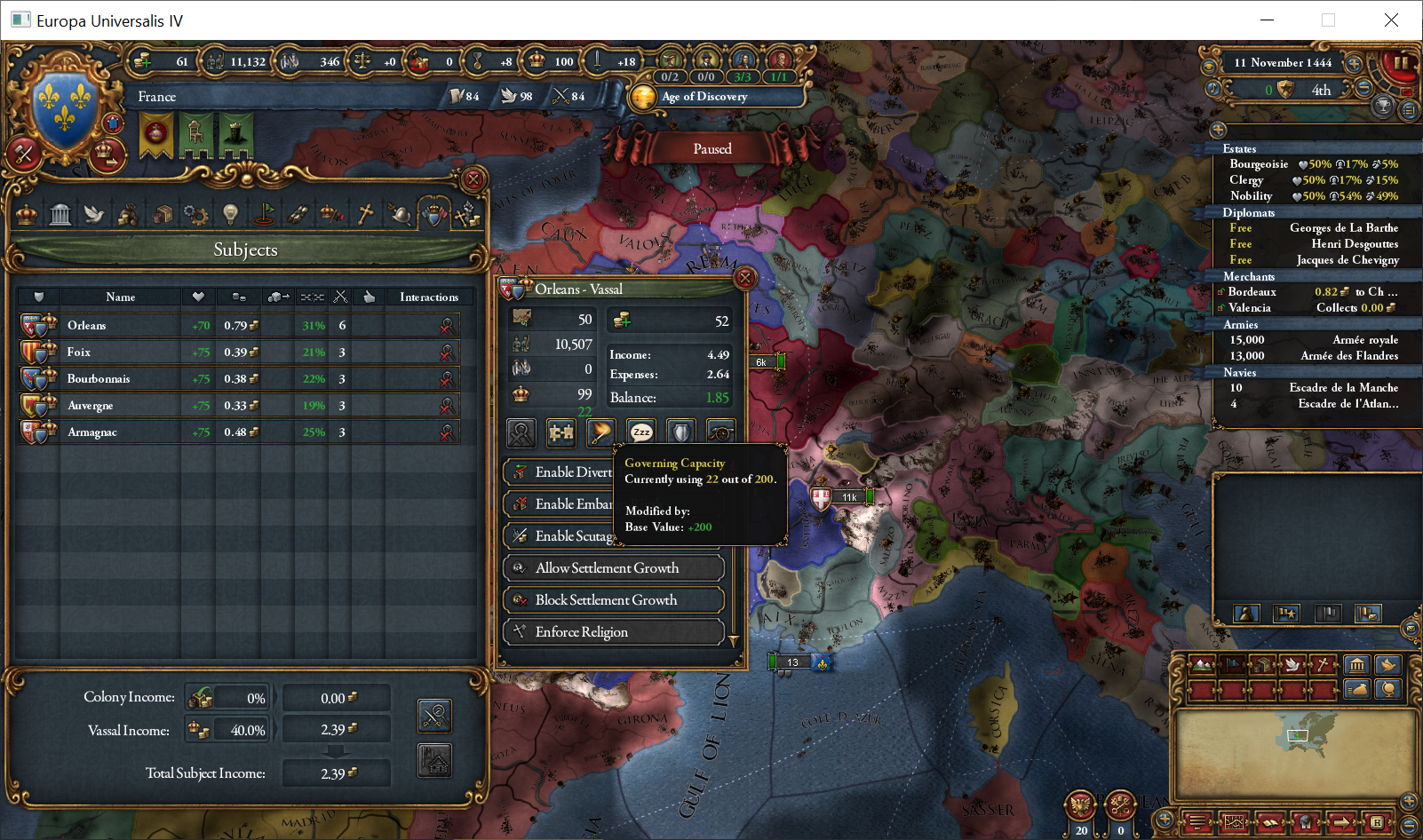
Jan 12, 2021
Europa Universalis IV - MagnusPDX
Click here to discuss on the Forums
After a few weeks without Dev Diaries, I am happy to present you a new one. I hope you all had a great time during them!
When I joined Paradox in October, Polynesia was not included in this Expansion. Considering it was the last part of the Earth without representation, I thought it would be nice to have some work done on it, so I proposed some ideas that I am happy to share with you all.
But, before I start, I would like to thank @Mechaffinity for his help and work that has greatly inspired me for this project.
THE MAP
The map has been slightly changed, since the basic needed setup was already there. However, in order to go a bit deeper, a few provinces have been added here and there. Do note that the flags are still a placeholder and not the final result.
Starting with Fiji, the archipelago has been divided in three provinces: one for each big island (Viti Levu and Vanua Levu) and a third one for the Lau archipelago that had a great influence from Tonga. Each province has a country inhabiting it, which is an abstraction of the many clans that populated each island. Should you unite them all under your banner, you will be able to form Viti.
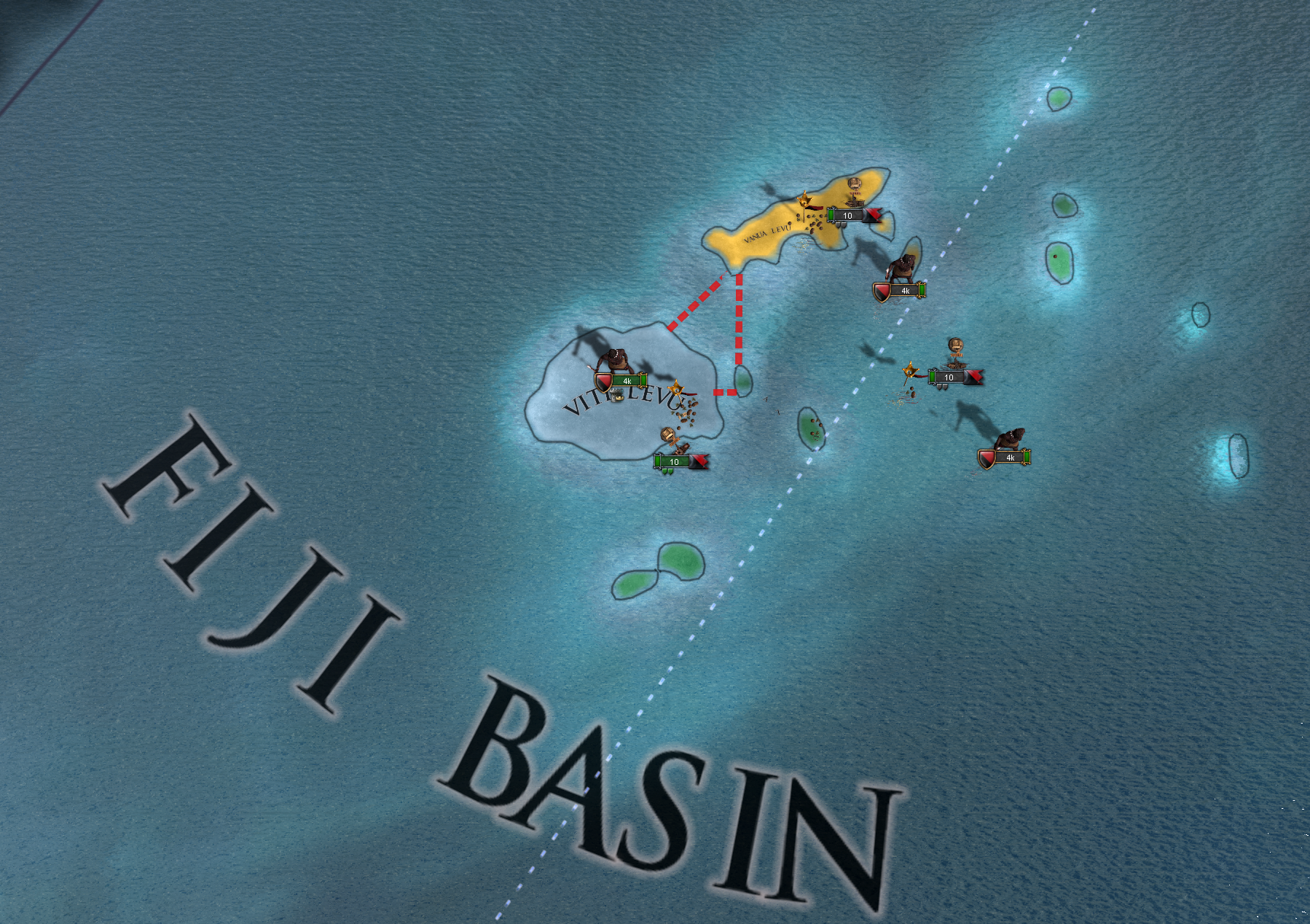
In New Zealand a new province has been added in North Island which has the most populated one by the Maori people. The number of countries, though, goes up to 7. Six of them (Mataatua, Tainui, Takitimu, Taranaki, Te Arawa and Te Tai Tokerau) are in the Northern Island and Waitaha is in the Southern One. As in the case of Fiji, a Maori country that manages to unite the area is able to form Aotearoa.
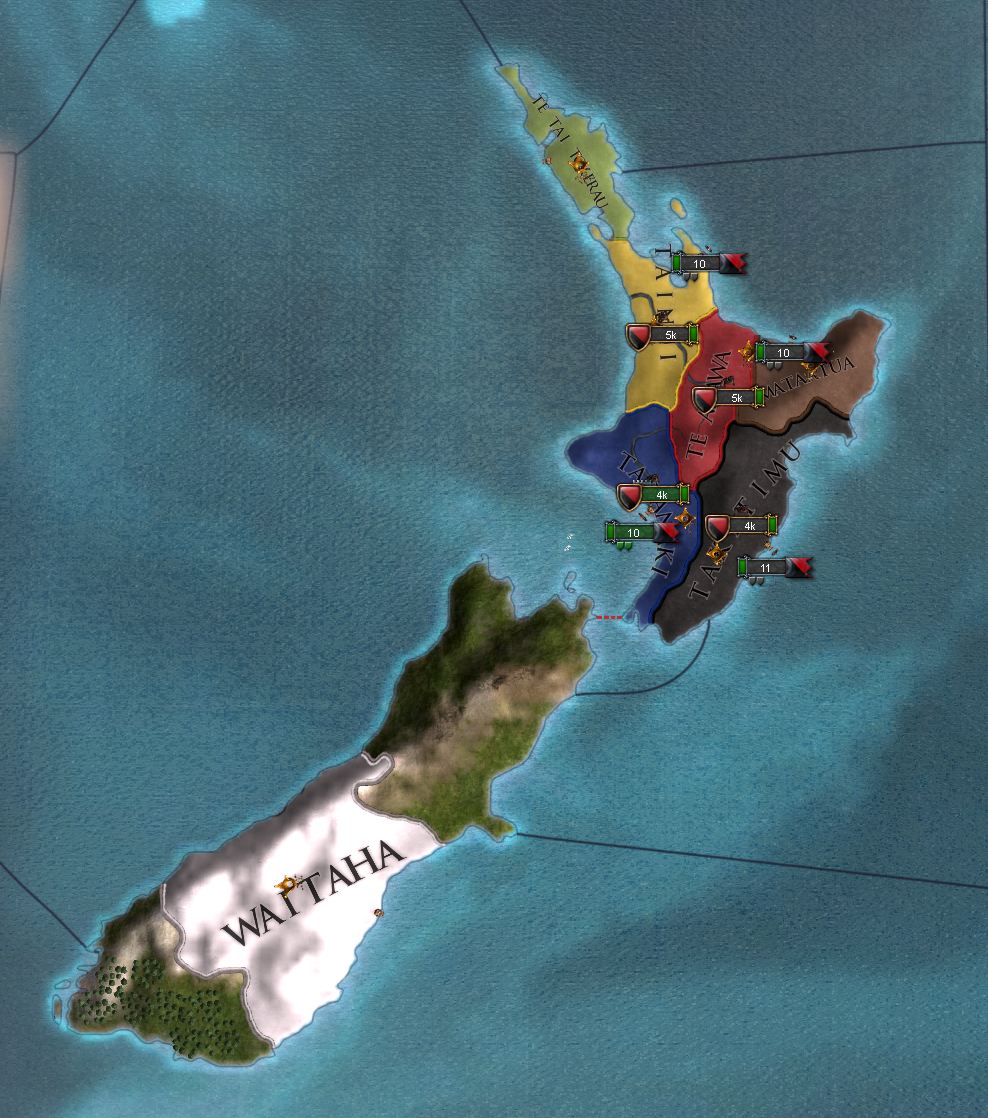
Finally, the greatest transformation has been done in the Hawaiian Archipelago, that has gone from one province to four. Each province has their own country attached (Hawai’i, Kaua’i, Maui and O’ahu). As in the other cases, there is a formable for the unifiers of the islands.
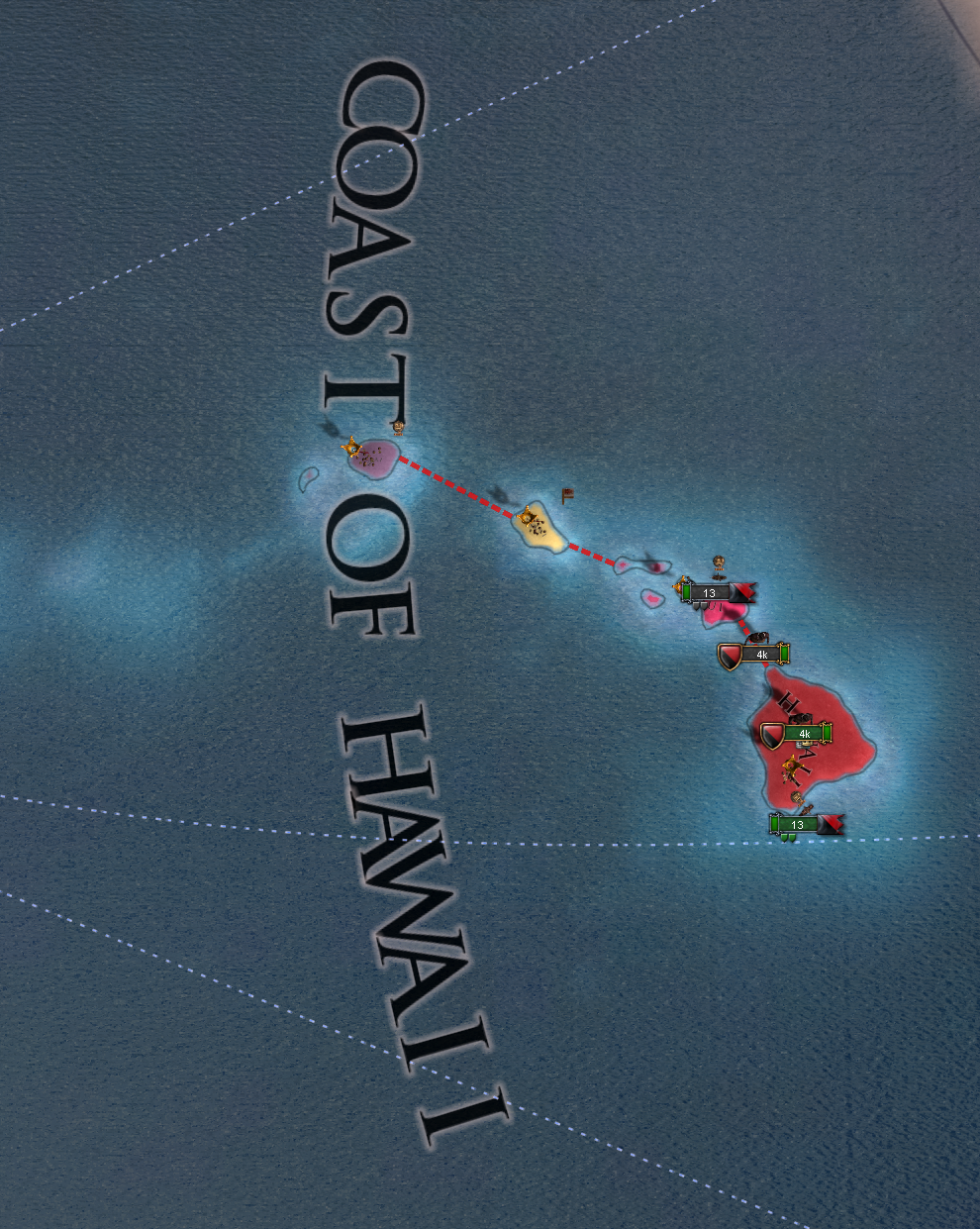
A Polynesian rework could not let the two most important countries out: Samoa and Tonga.
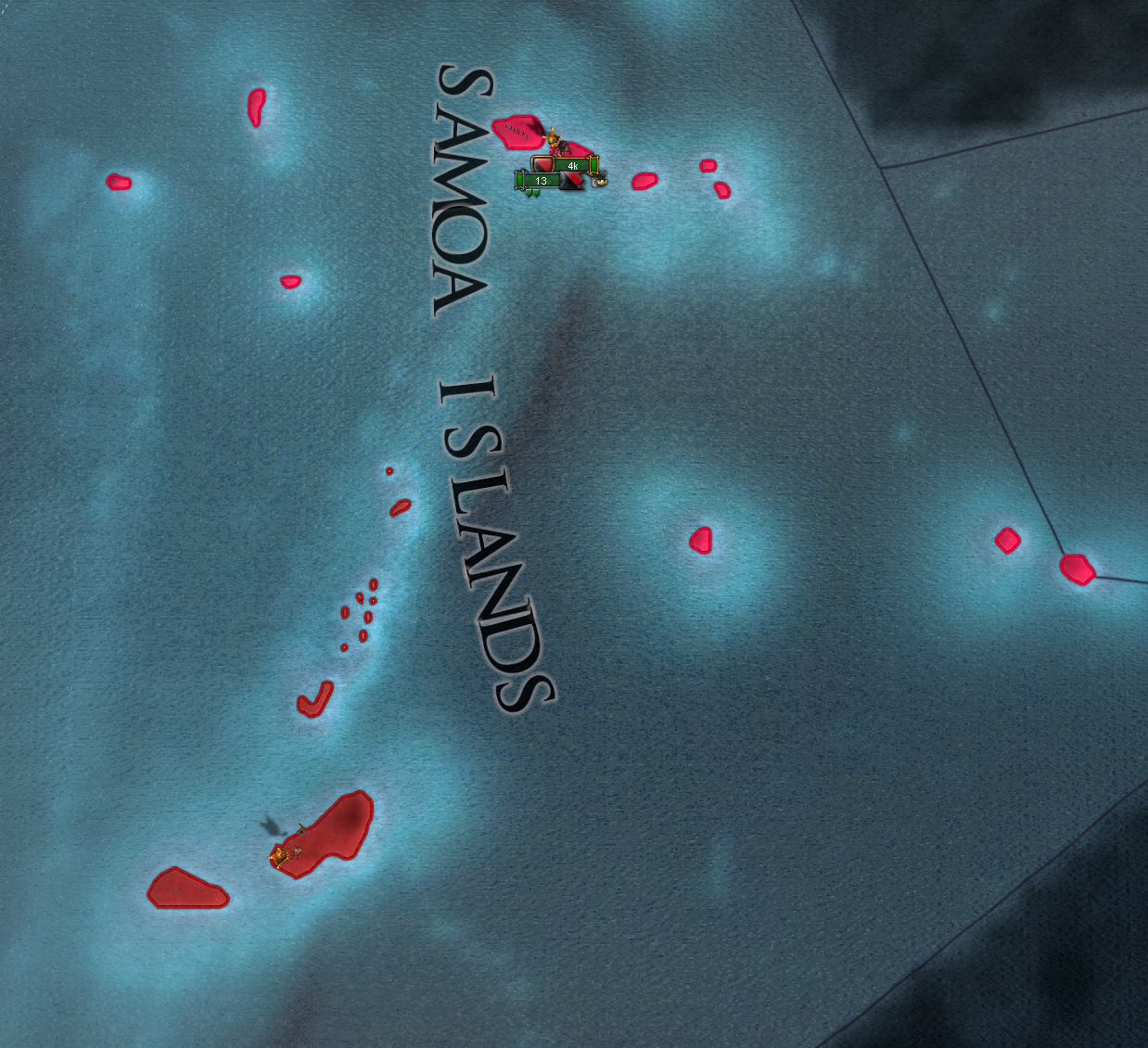
THE MISSIONS
As in the case of the Americas, the mission tree consists of a general common mission tree for every country and some specific missions for each country or group of them.

[Tonga Mission Tree]
(Notice that all icons are still placeholders)
Tonga is probably the most important TAG during this period. Despite the fact that the Tongan Empire is no more, a skillful player could rebuild it, bringing not only the neighboring islands under the control of Tongatapu, but go even further.
Some highlights of this tree include:

[Samoan Mission Tree]
(Notice that all icons are still placeholders).
If Tonga was the political power during the period, Samoa was the cultural one. Most of the Pacific was colonized from there and from there were most of the traditions that ruled the lives of the Polynesians.
Some highlights of this tree include:
In order to not spoil the surprise, I will let you discover what the missions for the Maori the Fijian and the Hawaiian countries consist of.
THE NATIONAL IDEAS
Adding new TAGs would not be the same if they were not accompanied by their National Ideas.
Starting with the Fijians TAGs, their warring nature brought them a reputation of ruthless combatants, feared by everyone. But Fijians were also deeply religious people and famous shipbuilding artisans. All these things are represented in their National Ideas, making them a rather expansionist set.
As in the case of the Fijians, the Maori are famed for their bravery and constant warfare. Their set of ideas is focused on land combat, without disregarding ways to keep the land around a strong leader.
As with the missions, we’d better not spoil the surprise by showing everything, am I right? I have a challenge for those that love them: try a world conquest with a Polynesian TAG! There are a couple of things in this area that could help you in that adventure. ;)
THE EVENTS
Events are one of the parts I like the most. While not as much time as I would have liked has been available, I have added more than 40 events to the area, including general events, specific Country events and even a few Easter eggs that I hope you can find and enjoy!
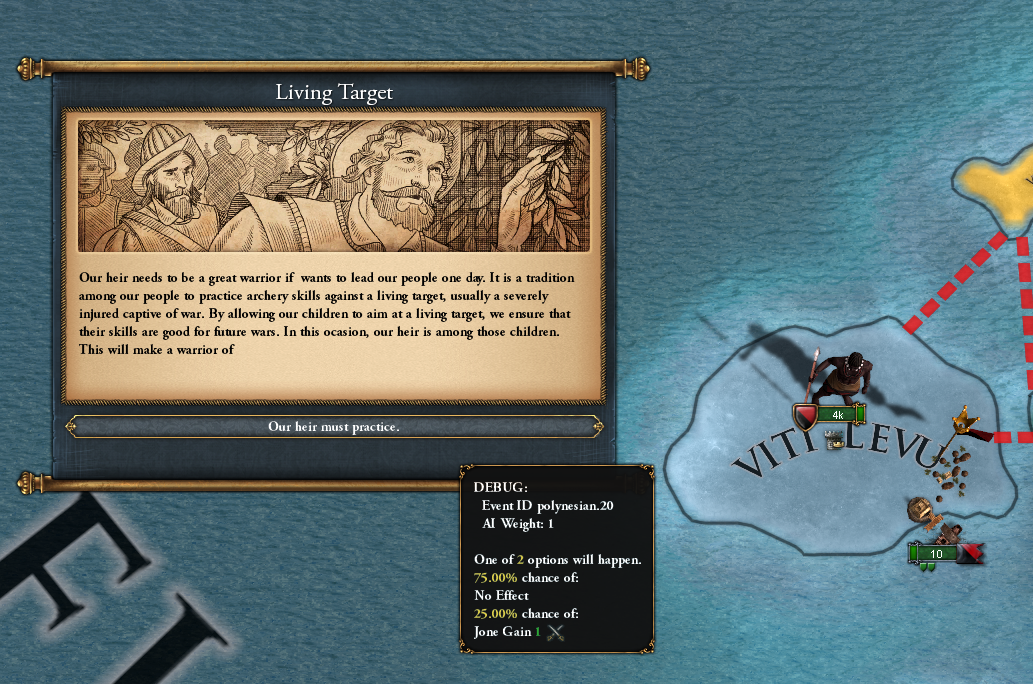
Practice is what makes you a good warrior, after all.
(Notice that all pictures are still placeholders).

This event can be very nasty if you are in a very bad shape.
(Notice that all pictures are still placeholders).
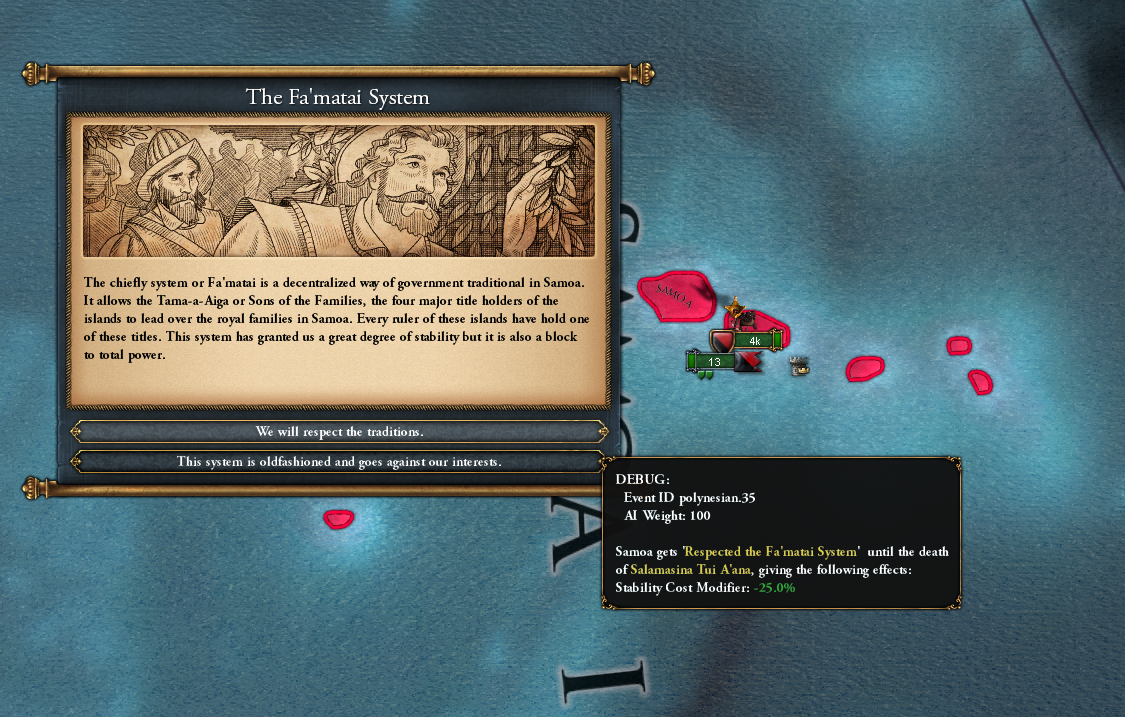
As Samoa, you will be given the choice to reform your society a bit or go on with the traditions with every ruler.
(Notice that all pictures are still placeholders).
THE EXTRAS
There are a few things that have been added in order to create a bigger sense of immersion.
Maori culture has been created, separated from the main Polynesian branch. By the start of the game, the Maori were abandoning the Archaic Maori Period and entering a transformation one. The Iwi became more sedentary and their once pacific nature became more warlike as competition for resources becomes more central. New traditions had evolved by this time that justifies separating them from their islander cousins.
A new Polynesian technology group has been created. This technology group is between that of the Mesoamericans and the North Americans in penalty, but starts at tech 2.
Most Estates have been renamed to their proper versions to increase the flavor.
And some extra surprises here and there.
For now this is all. We still have lots of things to show, so just be patient and enjoy the time in between, everything will come!
After a few weeks without Dev Diaries, I am happy to present you a new one. I hope you all had a great time during them!
When I joined Paradox in October, Polynesia was not included in this Expansion. Considering it was the last part of the Earth without representation, I thought it would be nice to have some work done on it, so I proposed some ideas that I am happy to share with you all.
But, before I start, I would like to thank @Mechaffinity for his help and work that has greatly inspired me for this project.
THE MAP
The map has been slightly changed, since the basic needed setup was already there. However, in order to go a bit deeper, a few provinces have been added here and there. Do note that the flags are still a placeholder and not the final result.
Starting with Fiji, the archipelago has been divided in three provinces: one for each big island (Viti Levu and Vanua Levu) and a third one for the Lau archipelago that had a great influence from Tonga. Each province has a country inhabiting it, which is an abstraction of the many clans that populated each island. Should you unite them all under your banner, you will be able to form Viti.

In New Zealand a new province has been added in North Island which has the most populated one by the Maori people. The number of countries, though, goes up to 7. Six of them (Mataatua, Tainui, Takitimu, Taranaki, Te Arawa and Te Tai Tokerau) are in the Northern Island and Waitaha is in the Southern One. As in the case of Fiji, a Maori country that manages to unite the area is able to form Aotearoa.

Finally, the greatest transformation has been done in the Hawaiian Archipelago, that has gone from one province to four. Each province has their own country attached (Hawai’i, Kaua’i, Maui and O’ahu). As in the other cases, there is a formable for the unifiers of the islands.

A Polynesian rework could not let the two most important countries out: Samoa and Tonga.

THE MISSIONS
As in the case of the Americas, the mission tree consists of a general common mission tree for every country and some specific missions for each country or group of them.

[Tonga Mission Tree]
(Notice that all icons are still placeholders)
Tonga is probably the most important TAG during this period. Despite the fact that the Tongan Empire is no more, a skillful player could rebuild it, bringing not only the neighboring islands under the control of Tongatapu, but go even further.
Some highlights of this tree include:
- Bringing both Fiji and Samoa under your control again.
- Recovering the Tongan Empire.
- Expand even further.

[Samoan Mission Tree]
(Notice that all icons are still placeholders).
If Tonga was the political power during the period, Samoa was the cultural one. Most of the Pacific was colonized from there and from there were most of the traditions that ruled the lives of the Polynesians.
Some highlights of this tree include:
- Recover the place as the cultural center.
- Challenge Tonga.
- Replace Tonga as the main power in the Pacific.
In order to not spoil the surprise, I will let you discover what the missions for the Maori the Fijian and the Hawaiian countries consist of.
THE NATIONAL IDEAS
Adding new TAGs would not be the same if they were not accompanied by their National Ideas.
Starting with the Fijians TAGs, their warring nature brought them a reputation of ruthless combatants, feared by everyone. But Fijians were also deeply religious people and famous shipbuilding artisans. All these things are represented in their National Ideas, making them a rather expansionist set.
fijian_ideas = {
start = {
light_ship_power = 0.1
naval_attrition = -0.1
}
bonus = {
ae_impact = -0.2
}
trigger = {
OR = {
tag = LAI
tag = VIL
#TODO: tag = VIT
tag = VNL
}
}
free = yes
fijian_crossroad = {
num_accepted_cultures = 2
}
fijian_degel = {
range = 0.1
global_ship_trade_power = 0.1
}
fijian_conjoined = {
global_missionary_strength = 0.02
}
fijian_waqa = {
prestige_from_naval = 0.4
}
fijian_cannibal = {
army_tradition_from_battle = 0.25
prestige_from_land = 0.4
}
fijian_kai = {
land_attrition = -0.25
}
fijian_confederacy = {
global_tax_modifier = 0.05
production_efficiency = 0.05
}
}
[Fijian National Ideas]As in the case of the Fijians, the Maori are famed for their bravery and constant warfare. Their set of ideas is focused on land combat, without disregarding ways to keep the land around a strong leader.
maori_ideas = {
start = {
global_regiment_recruit_speed = -0.10
harsh_treatment_cost = -0.20
}
bonus = {
prestige = 1
}
trigger = {
primary_culture = maori
}
free = yes
sons_of_kupe = {
global_sailors_modifier = 0.10
range = 0.10
}
kaikiakitanga = {
tolerance_own = 1
}
kaumatua = {
stability_cost_modifier = -0.20
}
kapa_haka = {
land_morale = 0.10
}
pa_defence = {
fort_maintenance_modifier = -0.10
}
te_moko = {
leader_land_shock = 1
}
maori_king = {
core_creation = -0.10
legitimacy = 1
}
}
[Maori National Ideas]As with the missions, we’d better not spoil the surprise by showing everything, am I right? I have a challenge for those that love them: try a world conquest with a Polynesian TAG! There are a couple of things in this area that could help you in that adventure. ;)
THE EVENTS
Events are one of the parts I like the most. While not as much time as I would have liked has been available, I have added more than 40 events to the area, including general events, specific Country events and even a few Easter eggs that I hope you can find and enjoy!

Practice is what makes you a good warrior, after all.
(Notice that all pictures are still placeholders).

This event can be very nasty if you are in a very bad shape.
(Notice that all pictures are still placeholders).

As Samoa, you will be given the choice to reform your society a bit or go on with the traditions with every ruler.
(Notice that all pictures are still placeholders).
THE EXTRAS
There are a few things that have been added in order to create a bigger sense of immersion.
Maori culture has been created, separated from the main Polynesian branch. By the start of the game, the Maori were abandoning the Archaic Maori Period and entering a transformation one. The Iwi became more sedentary and their once pacific nature became more warlike as competition for resources becomes more central. New traditions had evolved by this time that justifies separating them from their islander cousins.
A new Polynesian technology group has been created. This technology group is between that of the Mesoamericans and the North Americans in penalty, but starts at tech 2.
Most Estates have been renamed to their proper versions to increase the flavor.
And some extra surprises here and there.
For now this is all. We still have lots of things to show, so just be patient and enjoy the time in between, everything will come!




